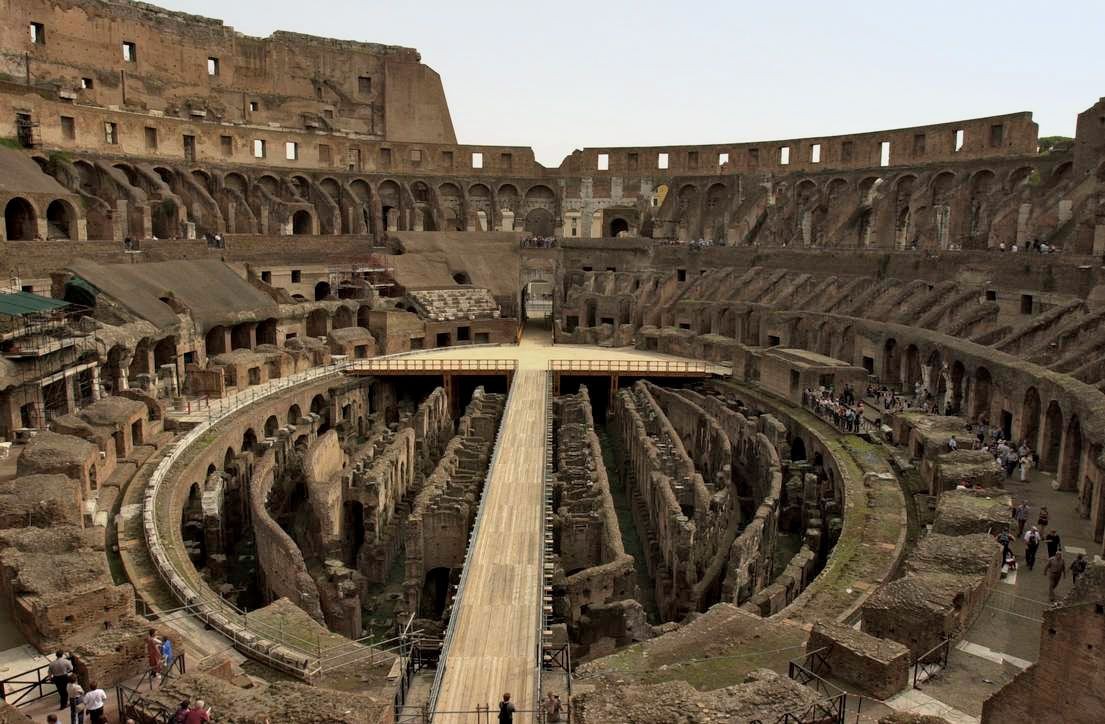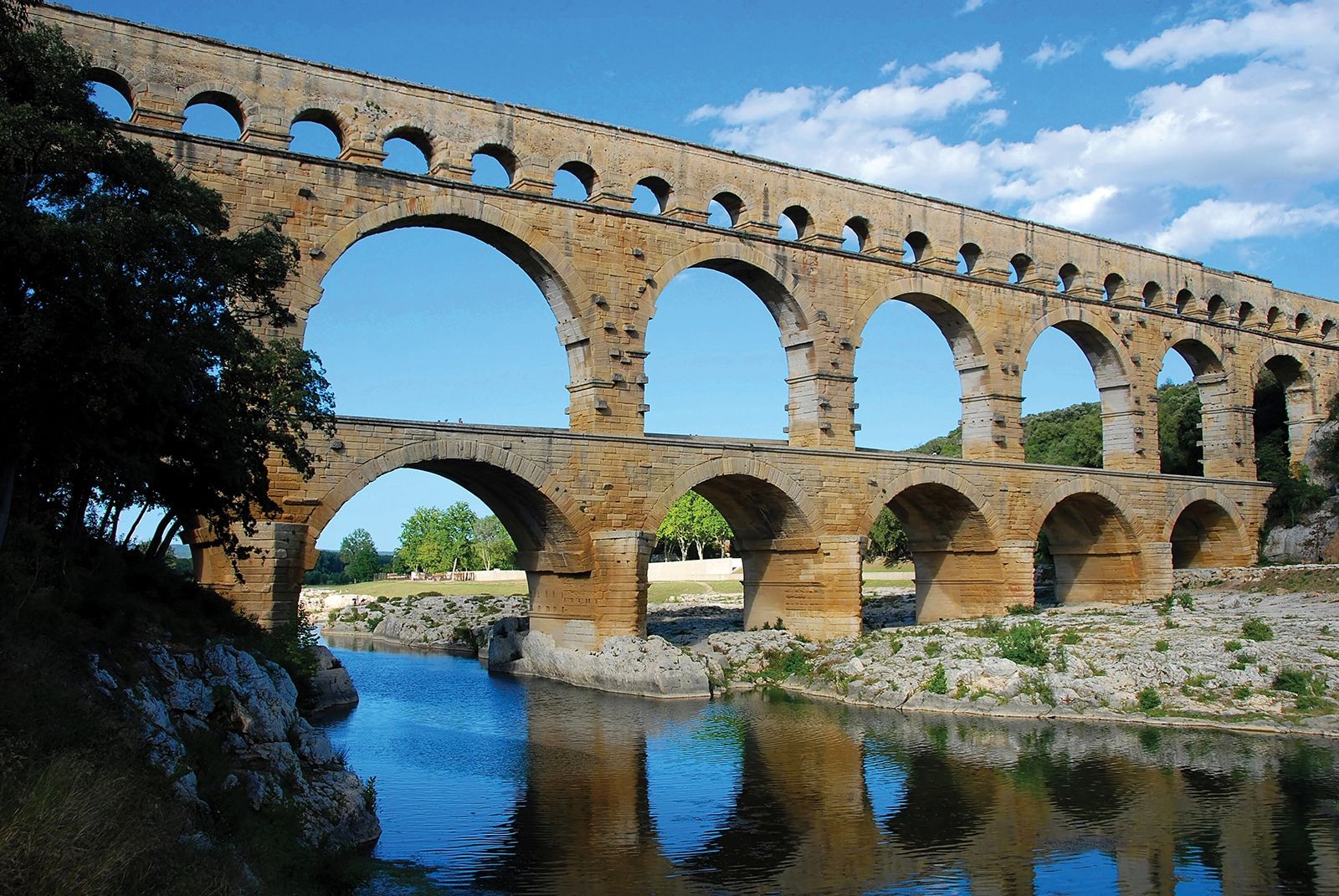Why did the Roman Empire fall? It’s a question that has intrigued historians and scholars for centuries. WHY.EDU.VN explores this pivotal moment in history, offering a comprehensive analysis of the complex factors that led to the decline and eventual collapse of one of the greatest empires the world has ever known and seeks to address common misconceptions. Dive into our expert insights to discover the reasons behind Rome’s downfall, including political instability, economic challenges, social decay, and external pressures, while also gaining a deeper understanding of the Roman civilization.
1. The Multifaceted Decline: Exploring Why Did The Roman Empire Fall
The fall of the Roman Empire wasn’t a singular event but a protracted process spanning centuries. Numerous interconnected elements contributed to its demise, making it challenging to pinpoint one single cause. The narrative often taught in history classes tends to oversimplify the complex interplay of factors that led to the empire’s decline.
1.1. Political Instability and Corruption
Political life in the late Roman Empire was marked by intrigue, corruption, and instability. Power struggles among emperors, senators, and military leaders created a climate of uncertainty and weakened the central government. The frequent changes in leadership, often through violent means, disrupted governance and made long-term planning nearly impossible. Corruption was rife at all levels of society, eroding public trust and diverting resources away from essential services.
- Imperial Succession Crises: The lack of a clear and consistent succession process led to frequent power struggles and civil wars.
- Senate Weakness: The Roman Senate, once a powerful body, lost much of its authority, becoming increasingly ineffective.
- Rise of Military Influence: The military played an increasingly prominent role in politics, often installing and removing emperors at will.
- Widespread Corruption: Bribery, extortion, and embezzlement were rampant throughout the government.
1.2. Economic Woes: A Stumbling Block for Rome
The Roman economy faced numerous challenges in its later years. Overexpansion, inflation, heavy taxation, and trade disruptions all contributed to its decline. The vast size of the empire made it difficult to manage resources effectively, and the constant wars drained the treasury. Inflation, driven by debasement of the currency, made goods and services more expensive, while heavy taxation burdened the population and stifled economic activity. Trade routes were disrupted by barbarian invasions and piracy, further weakening the economy.
- Overexpansion: The empire became too large and difficult to manage efficiently.
- Inflation: Debasement of the currency led to rising prices.
- Heavy Taxation: The tax burden on the population became unsustainable.
- Trade Disruptions: Barbarian invasions and piracy disrupted trade routes.
- Reliance on Slave Labor: Limited technological innovation and economic diversification.
1.3. Social Decay: The Moral Fiber Unravels
Traditional Roman values, such as discipline, duty, and patriotism, declined in the late empire. The gap between the rich and the poor widened, leading to social unrest and resentment. The ruling class became increasingly decadent and self-indulgent, while the lower classes struggled to survive. The decline in public morality and the rise of hedonism further weakened the social fabric of the empire.
- Decline in Traditional Values: Traditional Roman virtues were eroded by luxury and moral decay.
- Widening Gap Between Rich and Poor: Inequality fueled social unrest and resentment.
- Urban Overcrowding: Cities became overcrowded and unsanitary, leading to disease and crime.
- Rise of Hedonism: Self-indulgence and pleasure-seeking became increasingly prevalent.
1.4. External Pressures: The Barbarian Invasions
The Roman Empire faced increasing pressure from barbarian tribes along its borders. The Goths, Vandals, Huns, and other groups launched increasingly frequent and devastating raids into Roman territory. The empire’s military was stretched thin, and it struggled to defend its vast borders. The sack of Rome by the Visigoths in 410 CE was a major blow to Roman prestige and morale.
- Constant Raids: Barbarian tribes launched frequent raids into Roman territory.
- Military Overstretch: The Roman army was stretched thin and struggled to defend the borders.
- Sack of Rome: The Visigoths’ sack of Rome in 410 CE was a major turning point.
- Loss of Territory: The empire gradually lost territory to invading tribes.
1.5. Environmental Factors: A Silent Contributor
Recent research suggests that environmental factors, such as climate change and disease, may have also played a role in the decline of the Roman Empire. Changes in climate patterns may have led to droughts and famines, weakening the economy and contributing to social unrest. Epidemics, such as the Antonine Plague, decimated the population and further strained the empire’s resources.
- Climate Change: Altered agricultural productivity.
- Disease: Epidemics reduced the population and workforce.
2. A Perfect Storm: How These Factors Interacted
It is crucial to understand that the fall of Rome was not the result of any single factor but rather a combination of interconnected challenges. For example, political instability made it difficult to respond effectively to economic problems and external threats. Economic decline weakened the military, making it more vulnerable to barbarian invasions. Social decay eroded public trust and undermined the willingness to defend the empire. The complex interplay of these factors created a perfect storm that ultimately led to the collapse of the Western Roman Empire.
| Factor | Impact | Interconnection |
|---|---|---|
| Political Instability | Weakened government, disrupted governance | Made it difficult to address economic problems and external threats |
| Economic Woes | Depleted resources, increased poverty | Weakened the military, making it vulnerable to barbarian invasions |
| Social Decay | Eroded trust, undermined defense efforts | Reduced the willingness to defend the empire |
| External Pressures | Strained military, led to loss of territory | Exacerbated economic problems and political instability |
| Environmental Challenges | Reduced agricultural productivity, increased mortality | Intensified economic stress and contributed to social unrest |


3. The Division of the Empire: East vs. West
In the late 4th century, the Roman Empire was formally divided into two halves: the Western Roman Empire and the Eastern Roman Empire (later known as the Byzantine Empire). The division was intended to improve governance and make it easier to defend the empire’s vast territory. However, the two halves increasingly diverged in their political, economic, and social development. The Western Roman Empire, weaker and more vulnerable to barbarian invasions, ultimately collapsed in 476 CE. The Eastern Roman Empire, richer and more stable, continued to thrive for another thousand years.
3.1. Western Roman Empire: The Path to Collapse
The Western Roman Empire faced a multitude of challenges that ultimately led to its downfall:
- Weaker Economy: The Western Roman Empire was less wealthy and economically developed than the Eastern Roman Empire.
- Greater Exposure to Barbarian Invasions: The Western Roman Empire was more vulnerable to attacks from barbarian tribes.
- Political Instability: The Western Roman Empire experienced greater political turmoil and instability than the Eastern Roman Empire.
- Decline in Urban Centers: Cities in the Western Roman Empire declined in population and importance.
3.2. Eastern Roman Empire: A Thousand Years of Survival
The Eastern Roman Empire, with its capital in Constantinople, managed to survive for centuries after the fall of the Western Roman Empire. Several factors contributed to its longevity:
- Stronger Economy: The Eastern Roman Empire was richer and more economically vibrant than the Western Roman Empire.
- Strategic Location: Constantinople was located in a strategic location that was easier to defend.
- Centralized Government: The Eastern Roman Empire had a more centralized and efficient government.
- Strong Military: The Eastern Roman Empire maintained a strong and well-organized army.
- Cultural Cohesion: A strong sense of shared identity and purpose.
4. Key Events Leading to the Fall: A Timeline of Decline
The decline and fall of the Roman Empire were marked by a series of key events that gradually weakened the empire and ultimately led to its collapse:
| Year | Event | Significance |
|---|---|---|
| 96-180 CE | The Era of the Five Good Emperors | A period of relative stability and prosperity, but also increasing centralization. |
| 180-192 CE | The Reign of Commodus | Marked the beginning of a period of decline and mismanagement. |
| 193 CE | Septimius Severus Seizes Power | Established a military monarchy, increasing the power of the army. |
| 284-305 CE | The Reign of Diocletian | Implemented reforms that temporarily stabilized the empire, including the division of power (Tetrarchy). |
| 312-337 CE | The Reign of Constantine | Legalized Christianity, moved the capital to Constantinople, but failed to halt the empire’s decline. |
| 410 CE | The Sack of Rome by the Visigoths | A major blow to Roman prestige and morale. |
| 476 CE | The Fall of the Western Roman Empire | The last Roman Emperor was deposed, marking the traditional end of the Western Roman Empire. |
5. Debunking Myths: What Didn’t Cause the Fall of Rome
While many theories have been proposed to explain the fall of the Roman Empire, some popular explanations are not supported by historical evidence or are oversimplified:
- Lead Poisoning: The theory that lead poisoning from lead pipes caused the decline of the Roman aristocracy has been largely discredited.
- Christianity: While Christianity did become the dominant religion of the Roman Empire, it is unlikely that it was a primary cause of the empire’s fall.
- Moral Decay Alone: While moral decay was a factor, it was not the sole or primary cause of the empire’s collapse.
6. The Legacy of Rome: Enduring Influence
Despite its fall, the Roman Empire left an indelible mark on Western civilization. Its contributions in law, government, language, architecture, and engineering continue to influence the world today.
- Law: Roman law forms the basis of many legal systems in Europe and around the world.
- Government: Roman concepts of republicanism and representative government have influenced political thought for centuries.
- Language: Latin, the language of the Romans, is the ancestor of many modern European languages.
- Architecture: Roman architectural innovations, such as arches, domes, and concrete, are still used today.
- Engineering: Roman engineering feats, such as aqueducts and roads, are admired for their ingenuity and durability.
7. Lessons from the Fall: Relevance to Today
The fall of the Roman Empire offers valuable lessons for contemporary society. By studying the factors that contributed to its decline, we can gain insights into the challenges facing our own civilization and work to prevent similar outcomes. Issues such as political polarization, economic inequality, social division, and environmental degradation all pose potential threats to the stability and sustainability of our societies.
- Political Polarization: Extreme division and gridlock in government.
- Economic Inequality: Disparities in wealth and opportunity.
- Social Division: Fragmentation along ethnic, religious, and cultural lines.
- Environmental Degradation: Climate change, pollution, and resource depletion.
8. The Search for Answers: A Continuous Quest
The question of why the Roman Empire fell continues to fascinate and challenge historians and scholars. New research and discoveries are constantly shedding light on the complex factors that contributed to its demise. The ongoing quest to understand the fall of Rome provides valuable insights into the dynamics of civilizations and the challenges of maintaining long-term stability and prosperity.
8.1. New Archaeological Discoveries
Ongoing excavations and archaeological research continue to uncover new evidence about Roman life and the factors that contributed to its decline.
8.2. Interdisciplinary Approaches
Historians are increasingly collaborating with experts in other fields, such as climatology, genetics, and economics, to gain a more comprehensive understanding of the fall of Rome.
9. Expert Perspectives: Insights From Historians
Leading historians offer diverse perspectives on the fall of the Roman Empire, highlighting the complexity and multifaceted nature of this historical event.
- Bryan Ward-Perkins: Emphasizes the role of barbarian invasions and the collapse of the Roman state.
- Peter Heather: Focuses on the internal weaknesses of the Roman Empire and its inability to adapt to changing circumstances.
- Kyle Harper: Explores the impact of disease and climate change on the decline of the Roman Empire.
10. Unanswered Questions: Mysteries That Remain
Despite centuries of research, some questions about the fall of the Roman Empire remain unanswered. The relative importance of different factors, the precise timing of key events, and the long-term consequences of the empire’s collapse are all subjects of ongoing debate among historians.
- The Role of Climate Change: The exact impact of climate change on the Roman Empire is still debated.
- The Extent of Social Decay: The degree to which moral decay contributed to the empire’s decline is a matter of ongoing discussion.
- The Long-Term Consequences: The long-term effects of the fall of the Roman Empire on European history are still being explored.
FAQ: Frequently Asked Questions About the Fall of Rome
Here are some frequently asked questions about the fall of the Roman Empire:
- What was the main cause of the fall of the Roman Empire? There was no single cause, but rather a combination of political instability, economic problems, social decay, and external pressures.
- When did the Roman Empire fall? The Western Roman Empire fell in 476 CE. The Eastern Roman Empire (Byzantine Empire) continued to exist until 1453 CE.
- Was the Roman Empire doomed to fall? While the Roman Empire faced significant challenges, it is impossible to say definitively whether its fall was inevitable.
- Did lead poisoning cause the fall of Rome? The theory that lead poisoning caused the fall of Rome is largely discredited.
- Did Christianity cause the fall of Rome? While Christianity did become the dominant religion of the Roman Empire, it is unlikely that it was a primary cause of the empire’s fall.
- What was the role of barbarian invasions in the fall of Rome? Barbarian invasions played a significant role in weakening the Roman Empire and ultimately contributing to its collapse.
- How did the division of the empire contribute to its fall? The division of the empire into Western and Eastern halves weakened the Western Roman Empire and made it more vulnerable to barbarian invasions.
- What is the legacy of the Roman Empire? The Roman Empire left an indelible mark on Western civilization, with contributions in law, government, language, architecture, and engineering.
- What lessons can we learn from the fall of the Roman Empire? The fall of the Roman Empire offers valuable lessons for contemporary society about the challenges of maintaining long-term stability and prosperity.
- Is the fall of the Roman Empire relevant today? The fall of the Roman Empire provides insights into the dynamics of civilizations and the potential threats facing our own societies.
Conclusion: A Complex Legacy
The fall of the Roman Empire remains one of the most studied and debated events in history. The complex interplay of political, economic, social, environmental, and military factors contributed to its decline and eventual collapse. While the Western Roman Empire fell in 476 CE, its legacy continues to shape the world today. By studying the fall of Rome, we can gain valuable insights into the challenges facing our own civilization and work to build a more sustainable and prosperous future.
Do you have more questions about the fall of the Roman Empire or other historical events? At WHY.EDU.VN, we are dedicated to providing accurate, reliable, and in-depth answers to all your questions. Our team of experts is here to help you explore the world around you and gain a deeper understanding of the forces that shape our lives. Visit WHY.EDU.VN today to ask your question and discover a world of knowledge. Contact us at 101 Curiosity Lane, Answer Town, CA 90210, United States. Whatsapp: +1 (213) 555-0101. Visit our website: why.edu.vn.

